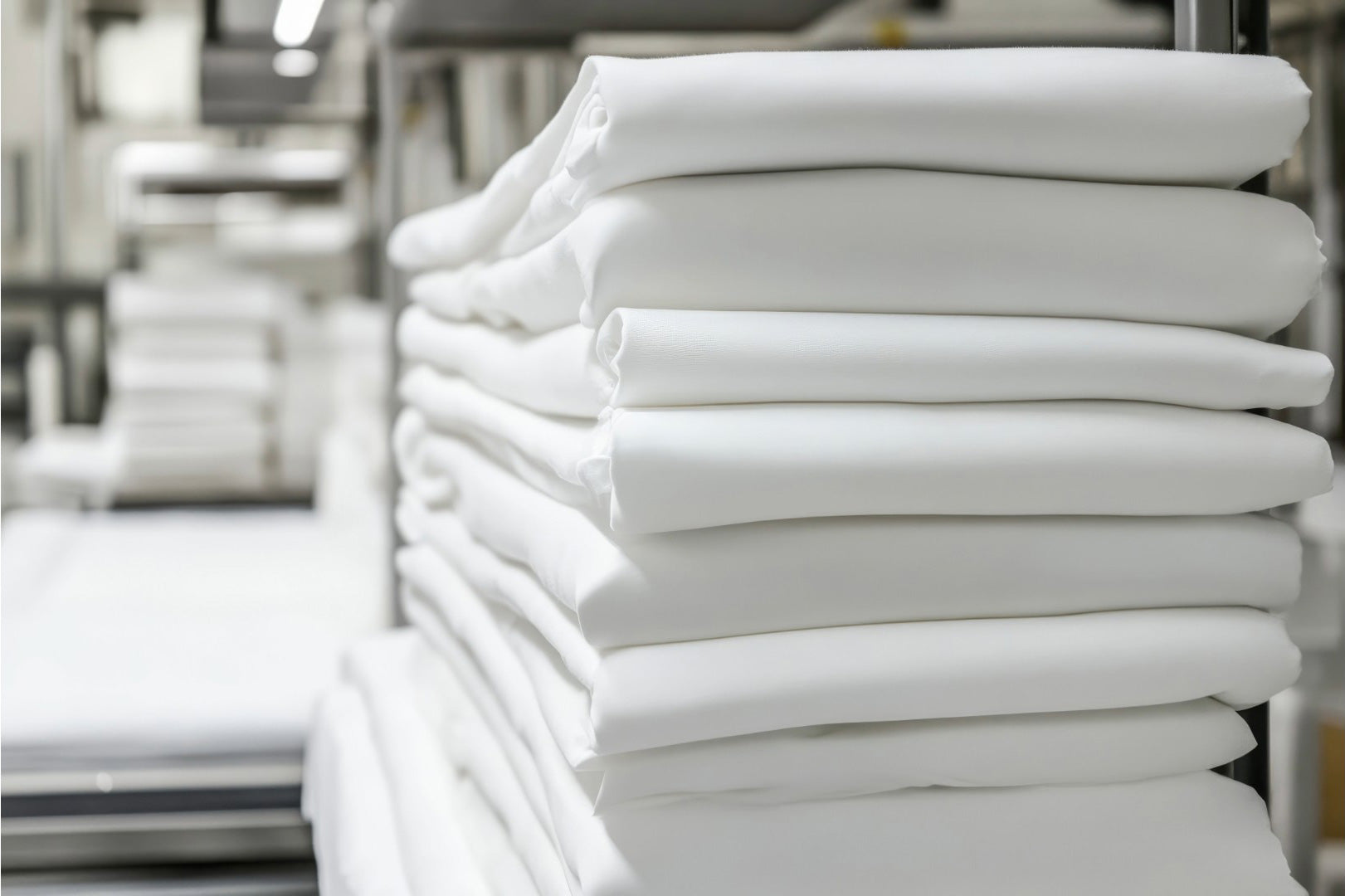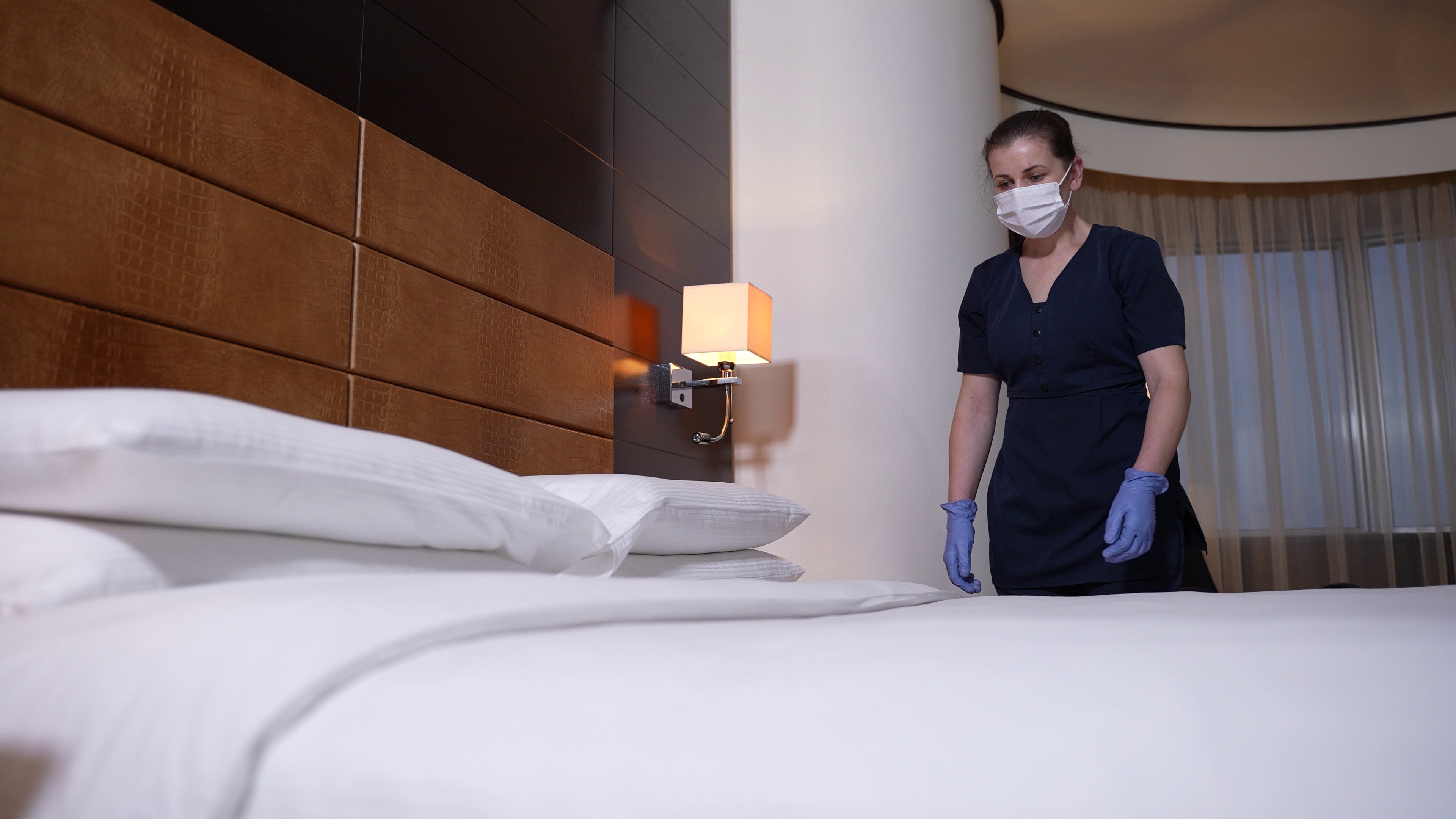The Pros & Cons of Using Fitted Sheets
When it comes to outfitting hotel beds, the debate between fitted sheets and triple sheeting continues to divide hospitality professionals. Both options offer unique benefits, and the right choice can impact everything from housekeeping efficiency to guest satisfaction and laundry costs. In this post, we’ll break down the pros and cons of each to help you decide what’s best for your property.
🧺 What Is Triple Sheeting?
Triple sheeting is a bedding technique where two flat sheets sandwich a lightweight blanket or duvet. It creates a clean, layered look and eliminates the need for bulky comforters or bedspreads. The setup usually looks like this:
- Fitted or flat sheet over the mattress
- Middle flat sheet
- Lightweight blanket or duvet
- Top flat sheet
✅ Advantages of Triple Sheeting
- Cost-Effective Laundry: Flat sheets are easier and cheaper to launder than bulky comforters or decorative bedspreads.
- Enhanced Cleanliness: Layers can be easily replaced between guests, improving hygiene and presentation.
- Faster Turnover: Housekeeping can make beds faster without wrestling with heavy or decorative bedding.
- Upscale Appearance: The layered look adds a crisp, tailored finish that many guests associate with luxury hotels.
- Flexibility: Easily swap out middle blankets for seasonal temperature changes.
❌ Disadvantages of Triple Sheeting
- Learning Curve: Staff must be trained on proper layering to keep consistency.
- Tucking Hassles: Without proper technique, layers may come undone or look sloppy.
- Flat Sheet Sizing: Requires flat sheets large enough to properly tuck under the mattress.
🛏️ What About Fitted Sheets?
Fitted sheets are tailored to hug the corners of the mattress with elastic edges, offering a snug fit that stays in place.
✅ Advantages of Fitted Sheets
- Secure Fit: Less shifting or bunching during sleep.
- Streamlined Bed-Making: Easier for staff to make beds without needing perfect tucks.
- Standardized Sizing: No guesswork—fitted sheets come in defined mattress sizes.
- Lower Training Burden: Ideal for properties with seasonal or high-turnover staff.
❌ Disadvantages of Fitted Sheets
- More SKUs: You’ll need different sizes for different beds (twin, full, queen, etc.).
- Wear & Tear: Elastic corners can lose shape over time, especially with industrial laundering.
- Storage Bulk: Fitted sheets take up more room when folded.
🏨 Which Option Is Right for Your Property?
Choose Triple Sheeting If:
- You want to project a polished, modern hotel aesthetic
- You prefer flat sheet inventory for cost-effective laundering
- Your staff is trained for consistent bed presentation
- You want an easy way to change bedding style by season
Choose Fitted Sheets If:
- You run a budget or economy property with high room turnover
- You have mattresses of varying depths and want a secure fit
- Your staff needs to make beds quickly and consistently
- You prefer a simplified bed-making process
💡 Pro Tip: Many Properties Use Both
Some hotels use fitted sheets on the bottom for a secure base layer, while still adopting double sheeting on top for visual appeal and ease of laundering. This hybrid model can offer the best of both worlds.
🧵 Bedding Matters — So Does Your Supplier
At The Linen Factory, we help hotels, motels, and vacation rentals choose the right bedding for their brand, budget, and operations. Whether you prefer classic fitted sheets or want to switch to triple sheeting, we offer high-quality, industrial-laundry–ready linens at wholesale prices.
👉 Shop Hotel Sheets & Pillowcases
🔍 Frequently Searched Questions
What is the difference between triple sheeting and using a comforter?
Triple sheeting uses flat sheets and a lightweight blanket or duvet insert, making laundering easier and more hygienic than traditional comforters.
Do hotels use fitted or flat sheets?
Many hotels use flat sheets exclusively, but some use fitted sheets on the bottom layer with triple sheeting on top.
Is triple sheeting better than duvets for hotels?
Yes—for most hotels, triple sheeting reduces laundry costs, increases hygiene, and provides flexibility for different seasons.









Share:
The Essential Guide to Sourcing Wholesale Textiles for Hotels: Key Considerations and Best Practices
Mastering PAR Levels: How Hotels Can Optimize Linen Inventory for Smoother Operations